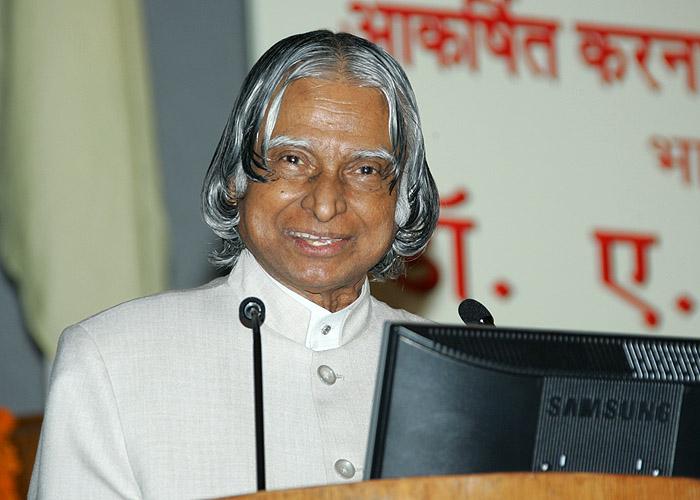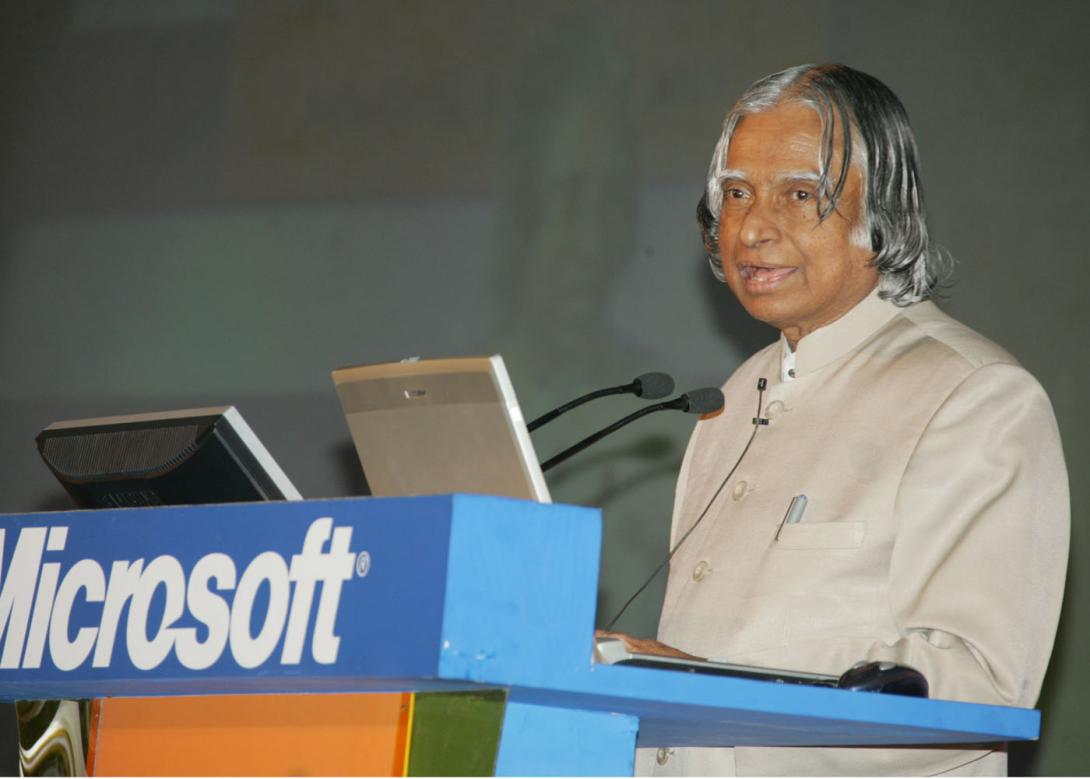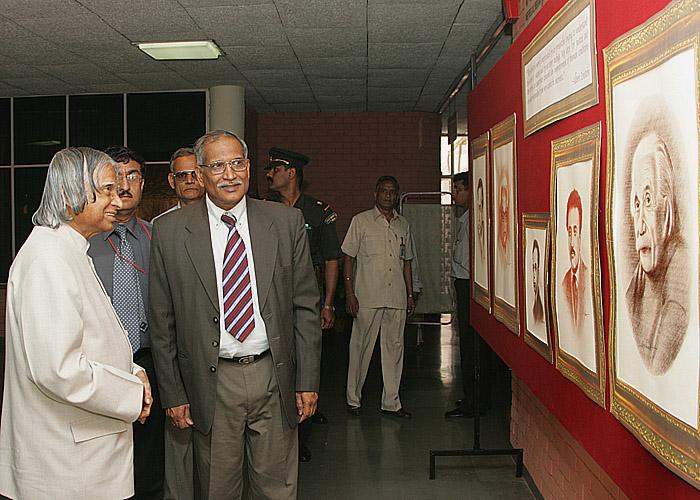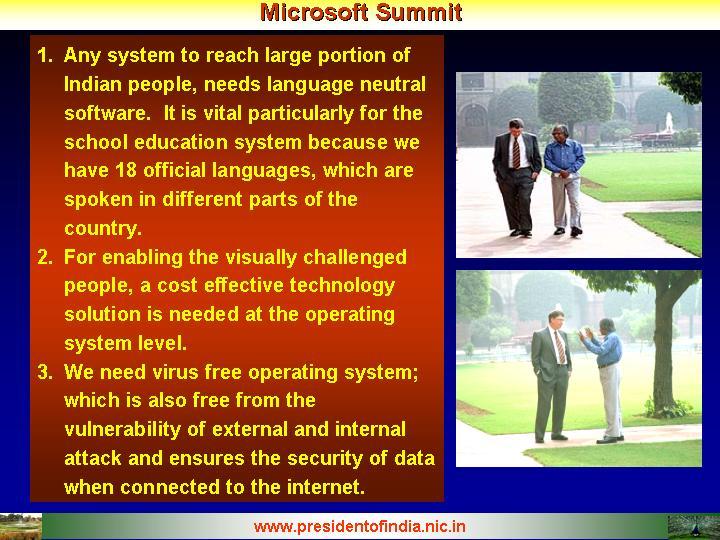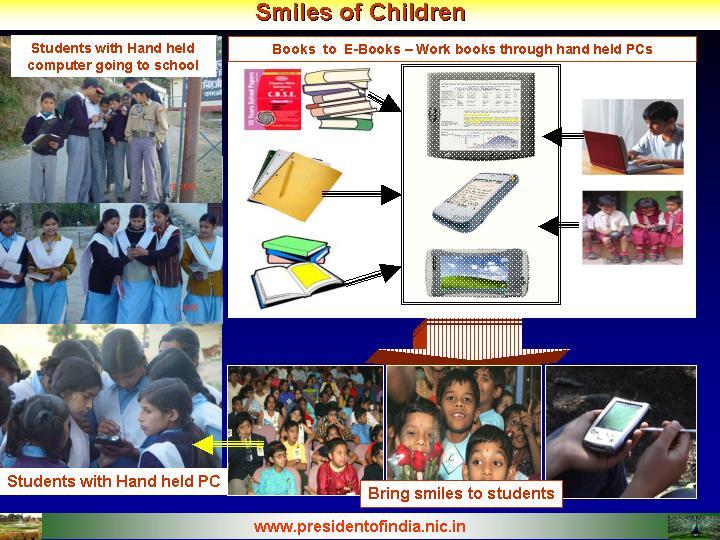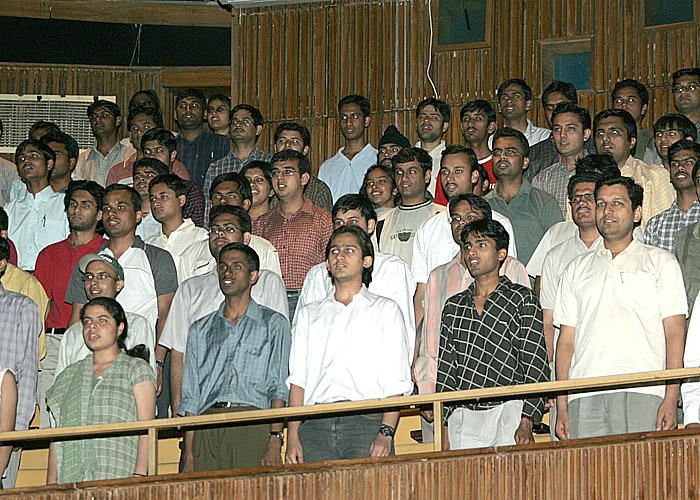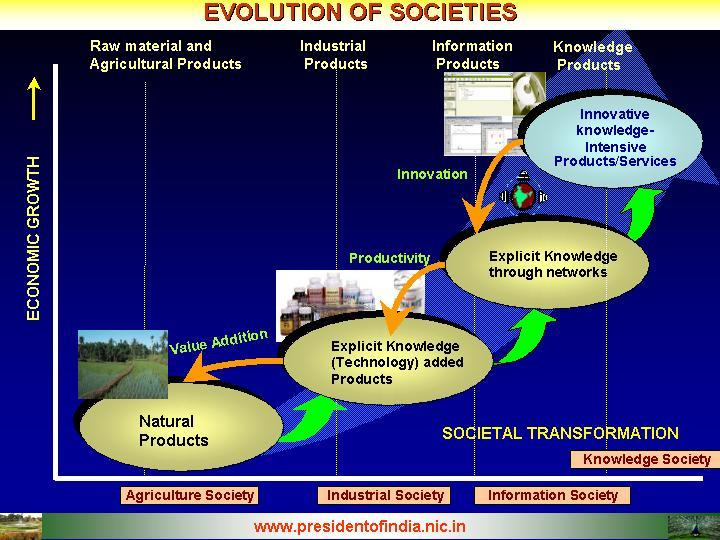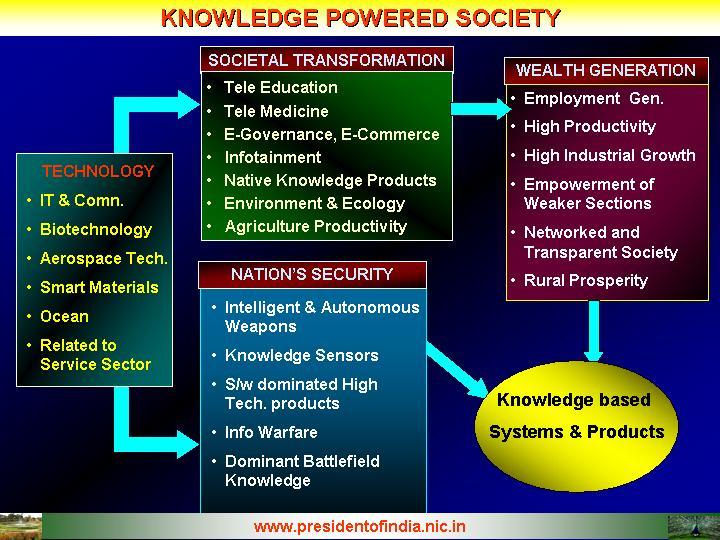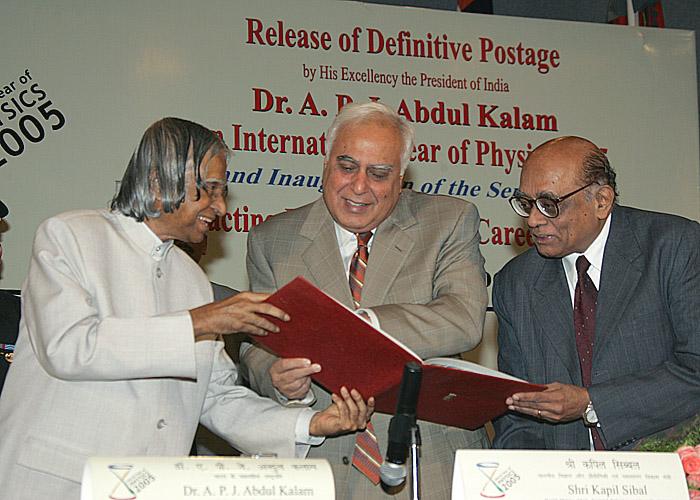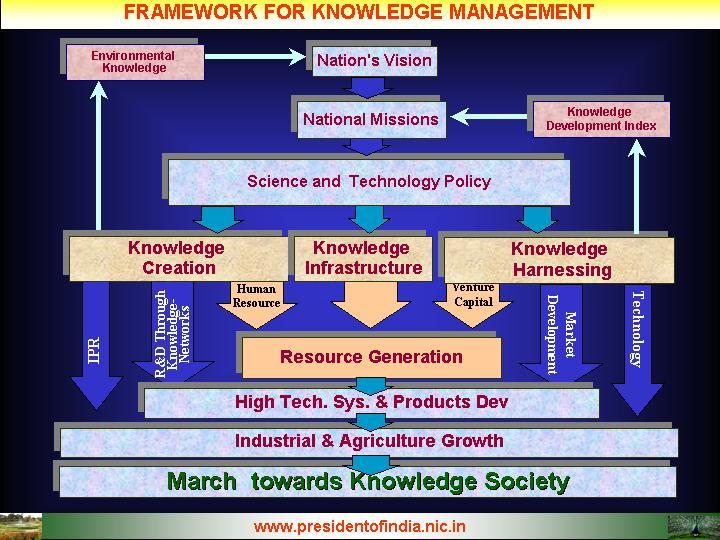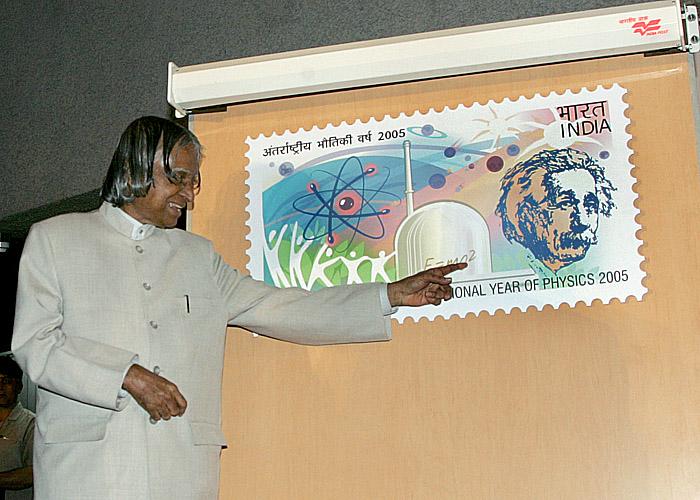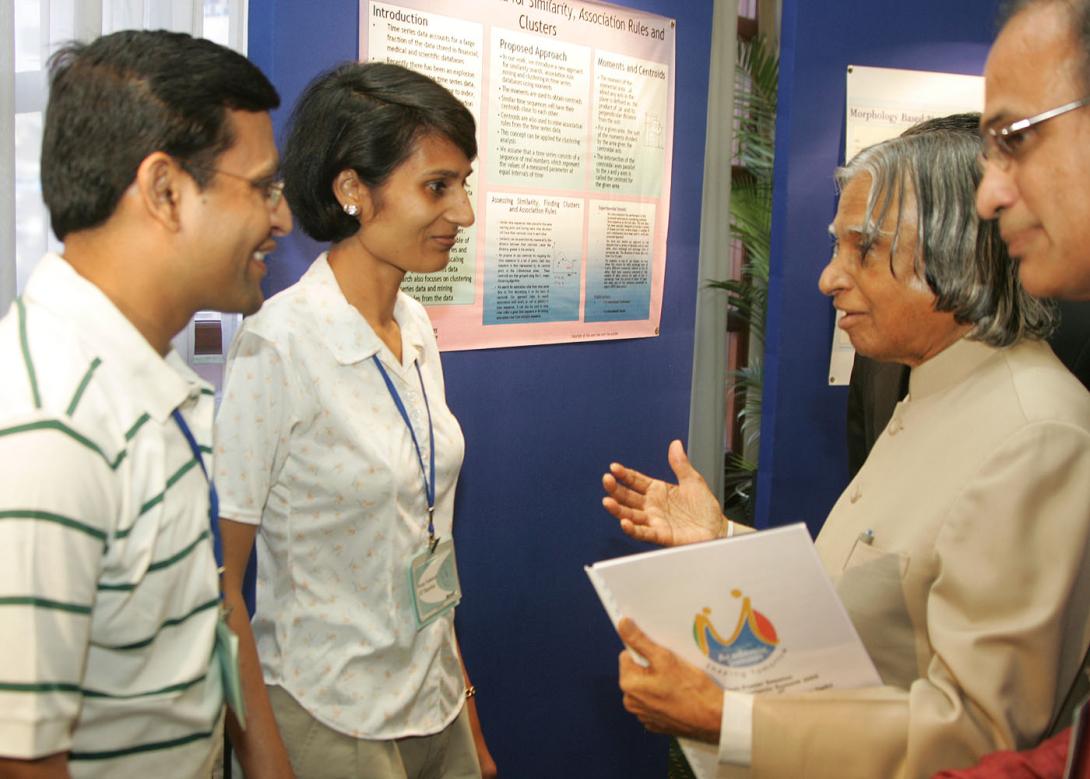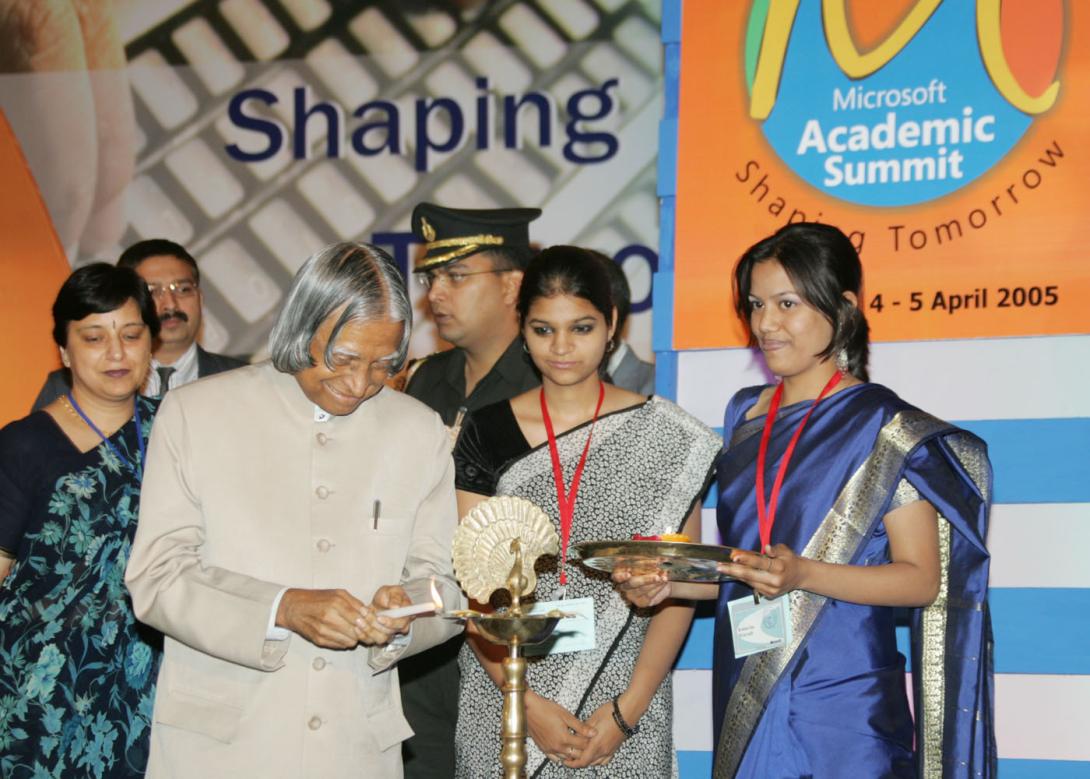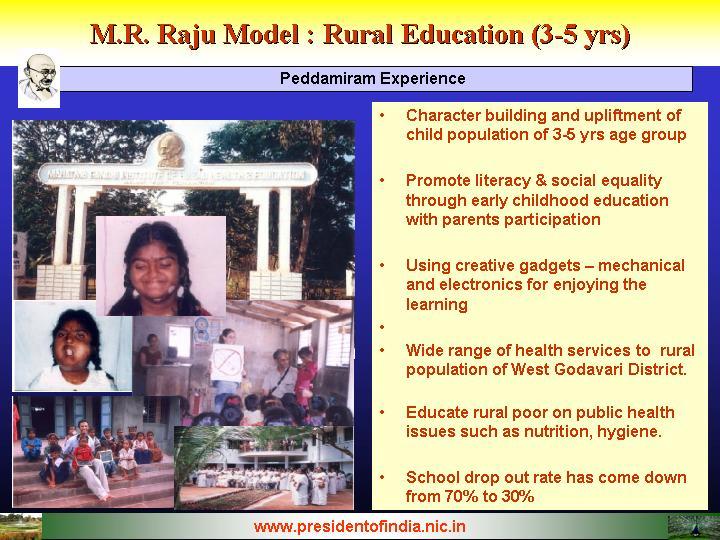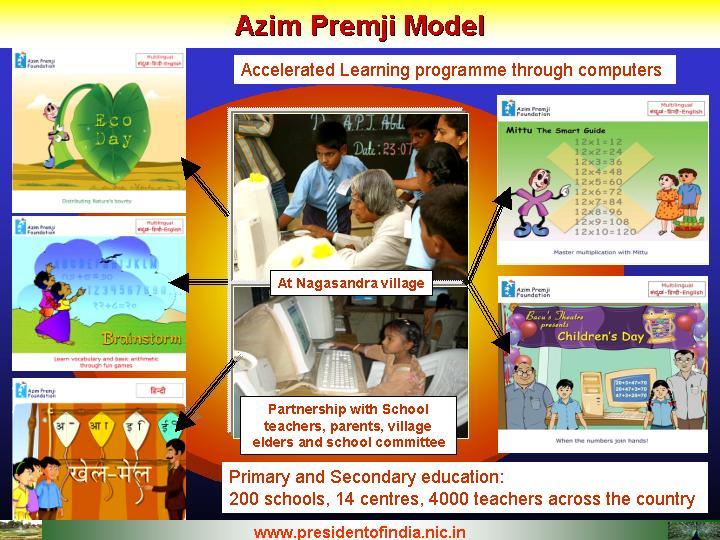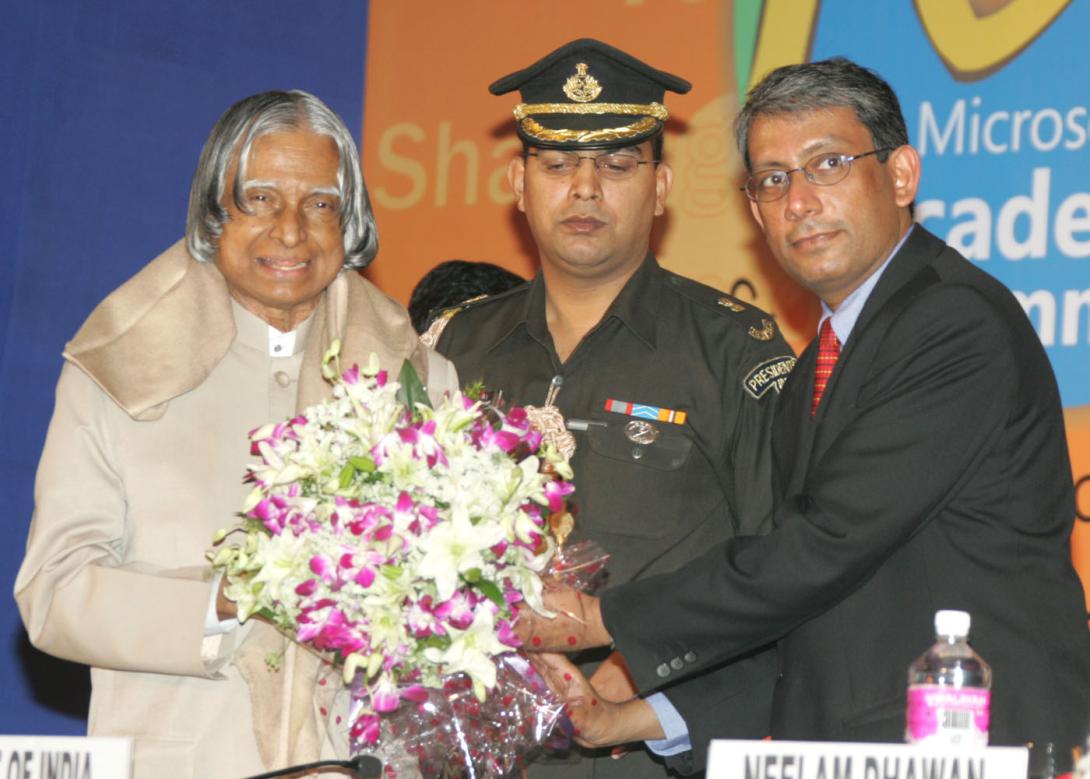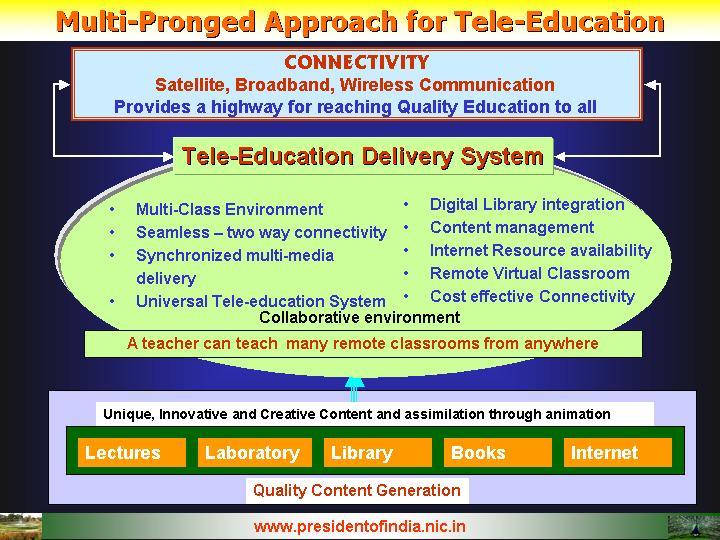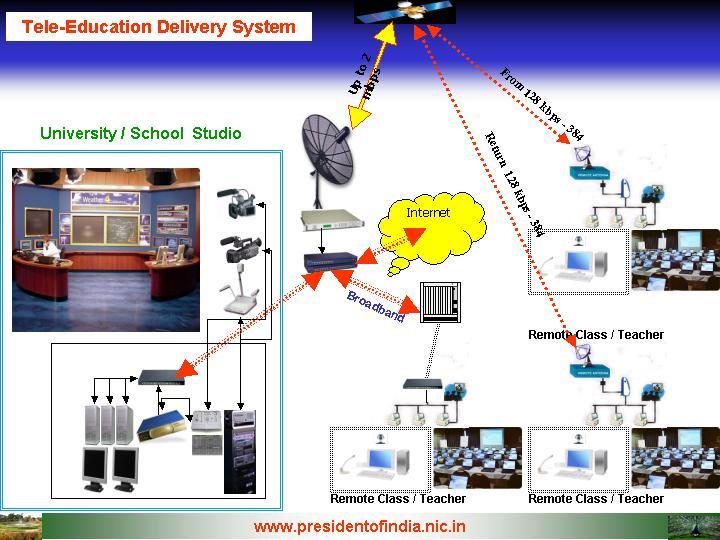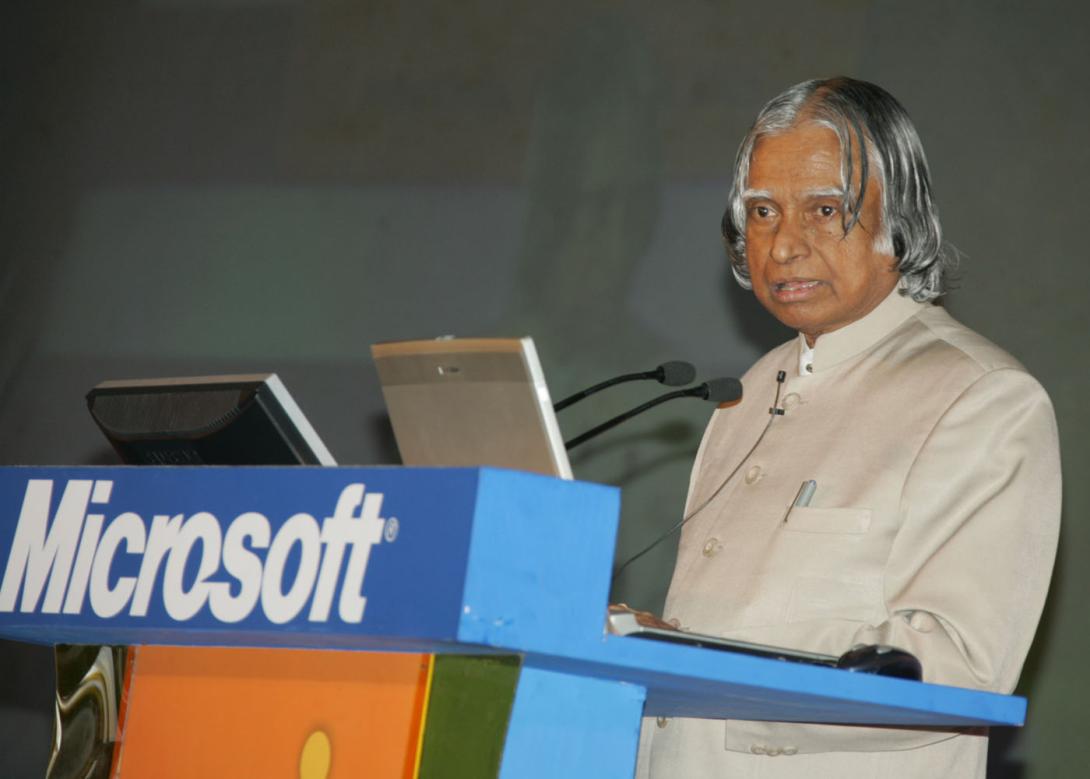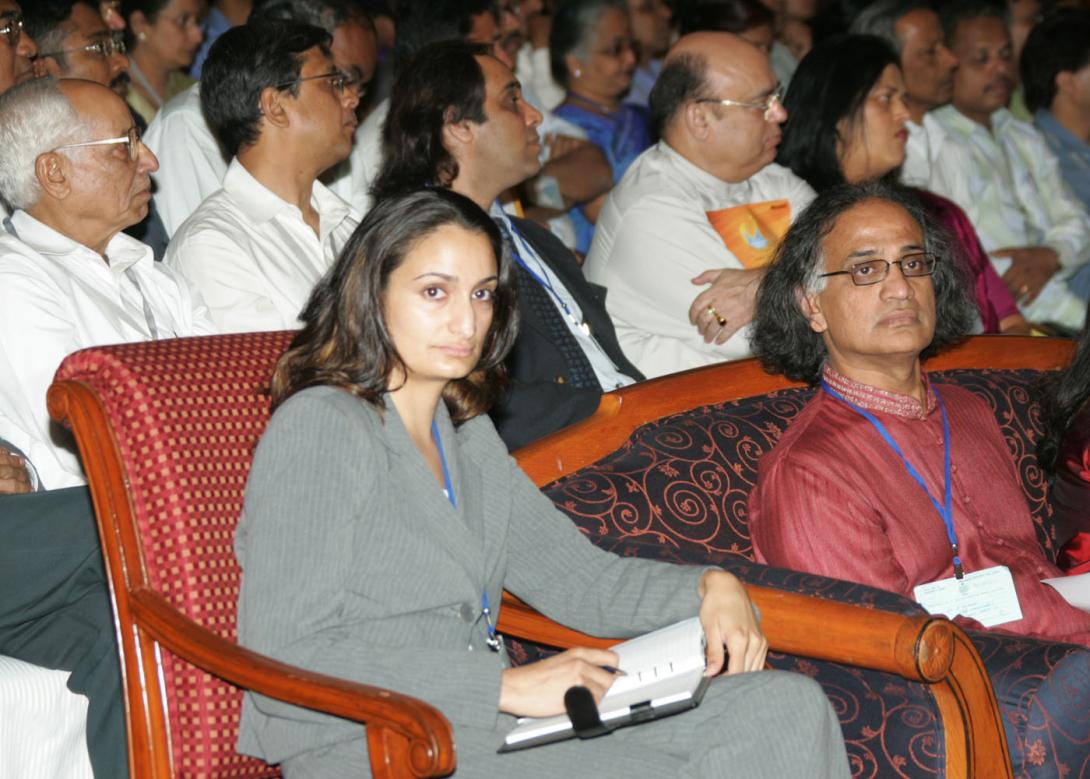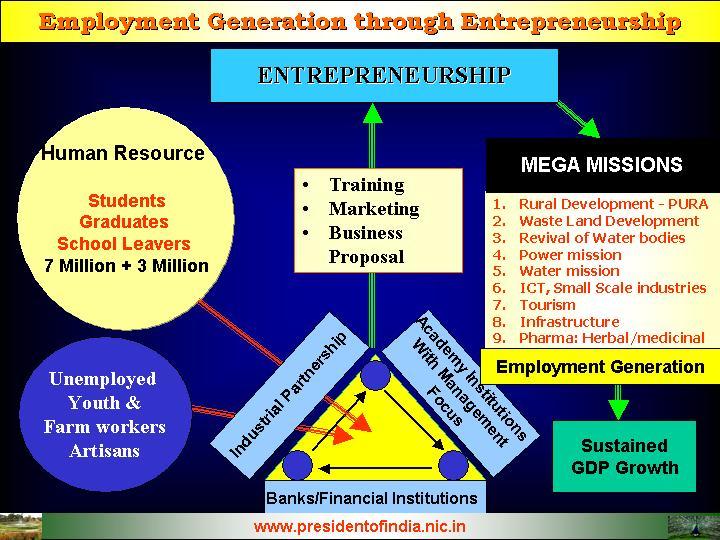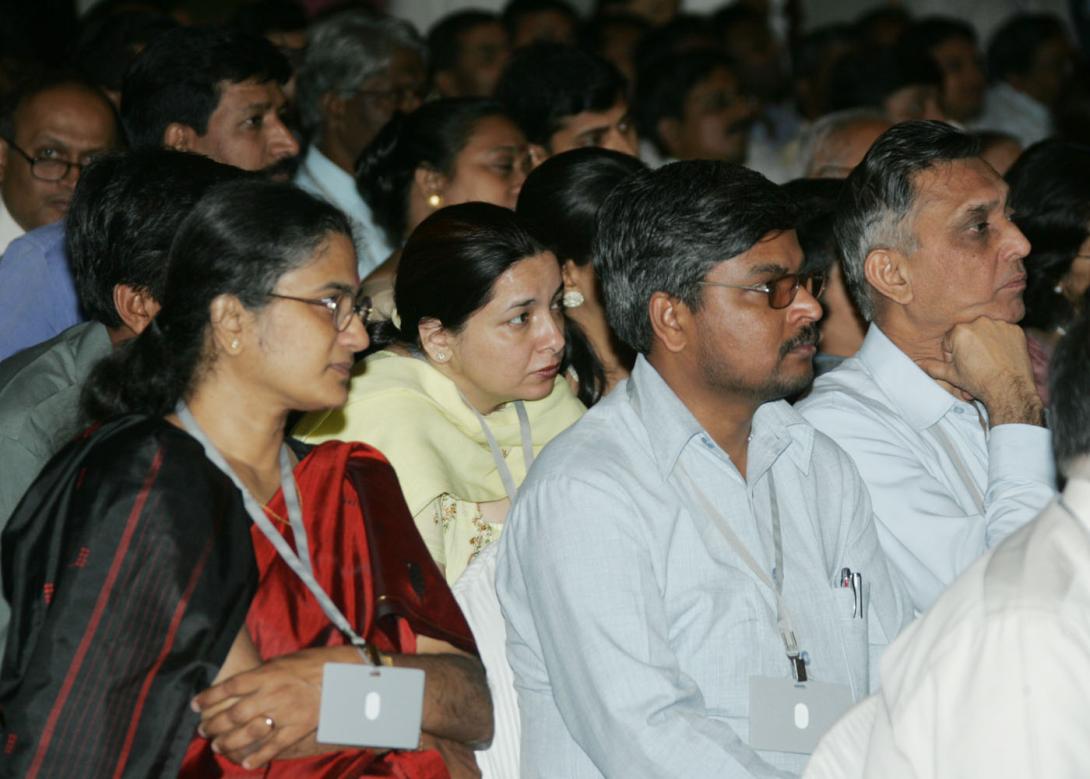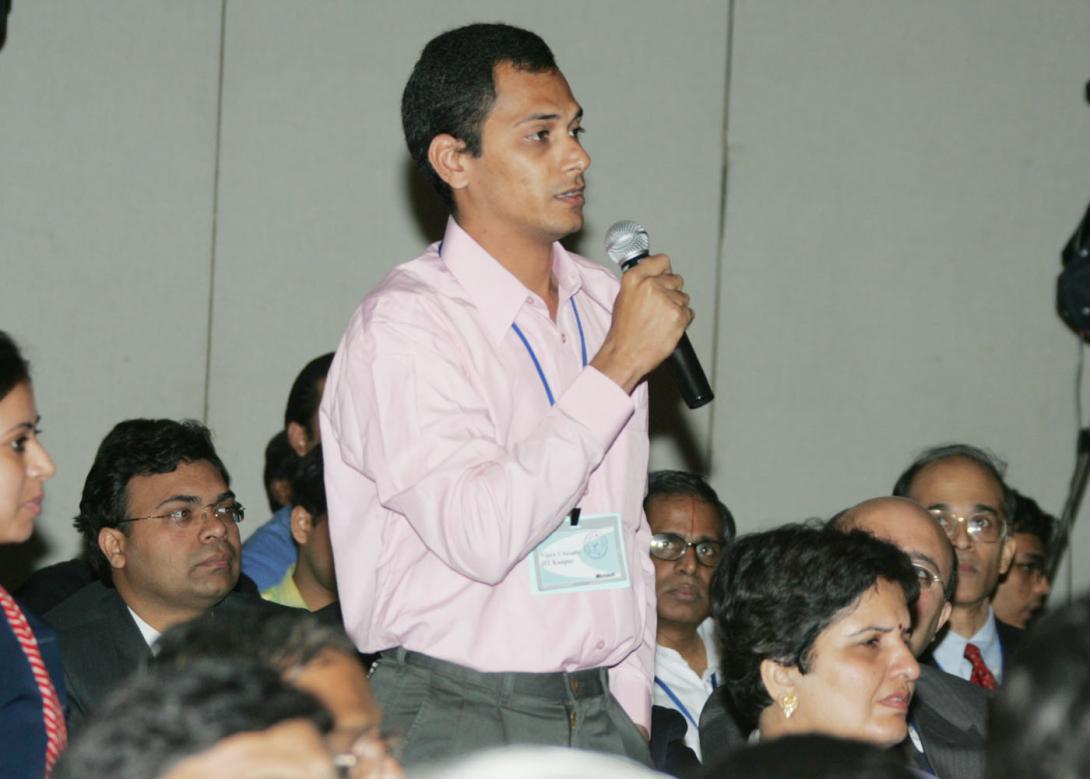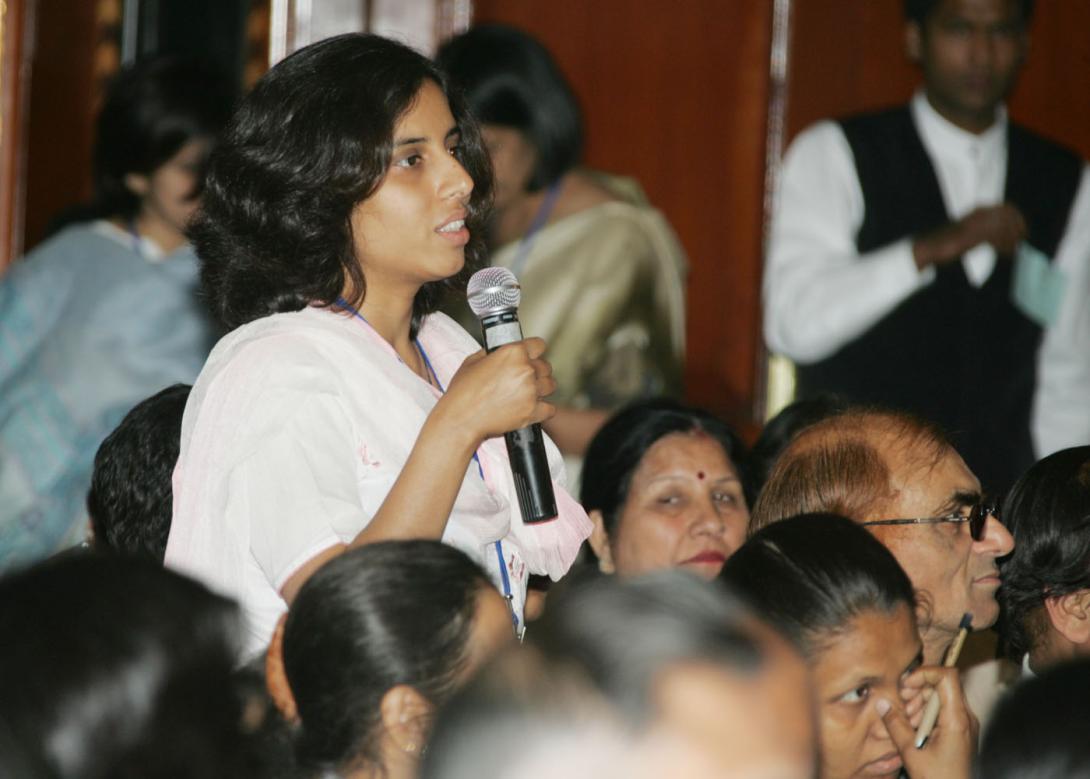Address at the Microsoft Summit 2005
New Delhi : 04-04-2005
Evolution of Knowledge Society: India's Partners
I am delighted to participate in the Microsoft Summit 2005 organized by the Microsoft Corporation (India) Pvt. Ltd., and deliver the inaugural address. My greetings to organizers, education planners, principals, professors, lecturers, IT professionals, industry partners participating in this summit. Microsoft has done pioneering work in providing a cost effective operating system for the Personal computer segment, which is indeed user friendly. I have selected the topic for discussion, "Evolution of Knowledge Society: India's Partners."
Microsoft chief Mr. Bill Gates met me in 2003 and we walked in the Moghal Gardens and discussed various issues with reference to the ICT industries. He was talking about his dream for providing ICT solution for the developing countries. He was also referring to the Indian scientists' and engineers' contribution to Microsoft. At that point of time, I had referred to Bill Gates, three aspects which will be of interest to India.
1. Any system to reach large portion of Indian people, needs language neutral software. It is vital particularly for the school education system because we have 18 official languages, which are spoken in different parts of the country.
2. For enabling the visually challenged people, a cost effective technology solution is needed at the operating system level (Voice integrated).
3. We need virus free operating system; which is also free from the vulnerability of external and internal attack and ensures the security of data, when using internet.
Microsoft India should give a big push for such a need which is unique to India.
Smiles of Children
I would like to share two observations relevant to this audience. When you look at small children, they are always smiling. When they start going to primary school and carry a big bag on their shoulders, the smile reduces. When they reach the secondary school, the smile further reduces. During higher secondary course, the smile virtually vanishes. When they enter college, they become more serious and after completing the college they are in a state of big worry. Simultaneously, during this period, the concerns of what is in store next linking financial situations and the competitiveness involved in entering into the specific field dominates the mind of the children and parents. This is the situation which we all have to overcome. Can we make an education system, which will retain the smile on the faces of our children right through the period of their education till they take up a job as they start attending the school? Is it possible? This can come if we make the education system creative throughout and provide full employment opportunity to all the youth based on their aptitude. This creativity can come by reducing the theoretical burden in the primary level, progressively increasing the theory in the secondary and finally leading to higher level teaching and create self-reliance among individuals to undertake entrepreneurship and be an employment generator rather than employment seeker.
Recently I heard from my friend, young father about his son Master Praveen Kumar studying in seventh class in one of the city schools. Few days ago, he came back from school and told his father that there is a sprain in his right shoulder. His father applied some balm and gave a small massage to remove the sprain and asked Praveen how did this happen? Did he fall down anywhere in the school? Or did it happen while playing some games? The boy replied that nothing like that had happened but he said that he only carried the school bag containing lot of books on his shoulder. I am sure many of you may be a witness to such scenes in different parts of the country. It can be true in many parts of the world also. Can ICT find a solution to this through a cost effective hand held computer which can be loaded with all the books as e-books, workbooks and also become a self learning tool for our children? This will enable the school children to carry just the hand held computer rather than a heavy bag for reading and doing class work. Once bought, this computer should be useful for the rest of the educational career. I realize this need is indeed a technological challenge. Can you take up the challenge?
Now I would like to discuss the evolution of an enriched society.
Evolution of enriched societies
We have multiple societies in every nation starting from agricultural society, industrial society, and information society leading to knowledge society. During the 20th century, societies underwent a change from the agricultural society, where manual labour was the critical factor to the industrial society, where the management of technology, capital, and labour provided the competitive advantage. The information era was born in the last decade. Networking within the country and with the other nations and the software products drove the economies. Some of the nations including India utilized this opportunity. In this decade we are just entering into knowledge society era.
The uniqueness of knowledge society is enriching the information society with innovation and value addition of products. The knowledge also enables value addition to the other three societies. In knowledge society, knowledge is the primary production resource instead of capital or labour. In India, I chaired a task team constituted by the Government of India sometime back for evolving a road map for transforming the Indian society into a knowledge society. I would like to discuss with you how we can work together to make our societies enriched by knowledge and transforming them into knowledge society.
Knowledge can create a comprehensive wealth for the nation and also improve the quality of life, in the form of better health, education, infrastructure, and other societal needs. The ability to create and maintain a knowledge society infrastructure, develop the knowledge workers, and enhance their productivity through the creation, growth, and utilization of new knowledge, will be the key factor in deciding the prosperity of this knowledge society. Whether or not a nation has developed into a knowledge society is judged by the way, it creates and deploys knowledge in the sectors like ICT, Manufacturing, Agriculture, and Healthcare and so on.
Dimensions of Knowledge Society
I was studying the dimensions of knowledge society and how will it be different from the industrial economy. In the knowledge economy the objective of a society changes from fulfilling the basic needs of all round development to empowerment. The education system instead of going by text book, teaching will be promoted by creative, interactive self learning ? formal and informal with focus on values, merit and quality. The workers instead of being skilled or semi-skilled will be knowledgeable, self-empowered and flexibly skilled and would adapt to newer technologies seamlessly. The type of work instead of being structured and hardware driven will be less structured and software driven. Management style will emphasize more on delegation rather than giving command. Impact on environment and ecology will be strikingly less compared to the industrial economy.
Hence the economy will be knowledge driven and not industry driven for which special capacities need to be built in education and nurtured among the students. The specific areas needing attention in improving the primary to secondary and university education are discussed.
Focus on Education System
Primary and Secondary: The conventional teaching coupled with distance education through state-of-the art connectivity can be a cost effective solution particularly in view of shortage of trained teachers. Tele-education system can speed up our country towards near 100% literacy and improve the quality of education. Methods of teachers training, infrastructure provision and school construction needs new technologies. Blackboard teaching with the teachers, is the primary mode of teaching at the primary level. Spontaneity and emotion will significantly enhance the learning. For effectiveness, education must become entertainment and engage the multimode senses of the children. The mission mode programme such as Sarva Shiksha Abhiyan for universalizing elementary education has to reach all the 600,000 villages in the country and similar system has to be evolved for secondary education. ICT can be an important tool in this regard.
Under Graduate and Post-graduate Education: Existing post-graduate institutions should also have undergraduate programmes. It is a good effort that the RECs have already been converted as NITs and of course they have to be provided adequate autonomy in line with IITs. Private sector initiative in education needs to be encouraged. Bringing down the higher education cost through competition is vital. Existing universities even UGC supported ones should be permitted to set their own levels of teaching keeping in view, the quality of education imparted. The open universities such as IGNOU should modernise their distance education system through a comprehensive, two way interactive tele-education delivery system and enlarge the scope to remote areas in the nation. The banking system must provide educational loans to all courses to encourage students to undertake any graduate courses and enable prevention of drop outs at the plus two level. For meritorious candidates of economically weaker sections of the society there must be special scholarships provided by the government, non-government and private enterprises. Large number of graduates will be needed for working in the IT enabled services and BPO. Now I would like to discuss how to reduce the drop out rates occurring in different stages of our education, how to reach the rural areas where 70% of our population live, how do we add value to education and how do we create life long learners.
M.R. Raju Model
A few months back, I talked to my friend Prof. M.R. Raju of Peddamiram, a village close to Bheemavaram, Andhra Pradesh. The life of Prof. Raju is indeed a great example, how a famous nuclear scientist working in Los Alamos Laboratory, USA decided to transform his native village Peddamiram and its surroundings, with the support of his family members. With his assets he started the Mahatma Gandhi Memorial Medical Trust in that village. In a decade, he and his team supported by volunteers from various institutions from India and abroad, have brought great change to the people in the village. He started an education system for children between the age group of 3-5 years for promoting creativity, learning through use of mechanical and electrical gadgets, imparting of hygiene training and periodic meeting with the parents to emphasize the need for educating their children continuously. Particularly he targeted character building and upliftment of the economically weaker sections of the children. This has totally transformed the village atmosphere and the drop out rate of the children in schools has come down from 70% to less than 30%. They are receiving creative learning in a harmonious atmosphere. A confident young population is emerging in the village. In addition, two hospitals, one for cancer diagnosis and treatment particularly cervical cancer among tribals and the second one for treatment of eye diseases have been commissioned in the village. I had visited Peddamiram on 2nd October 1996 and seen the development progress myself. I would like to mention that Prof. Raju and his team are doing such an important noble mission silently in Peddamiram with the participation of State government officials. I am sure his tribe will multiply.
Azim Premji Model
I understand, in an effort to improve the overall quality of school learning for children, the Azim Premji Foundation in collaboration with state governments and multilateral agencies has started a child friendly school initiative. The principal aim of this programme is to ensure that all children come to school, learn during school time and complete five years of schooling. In this model, literacy improvement is achieved through accelerated learning with the help of computer-based creative content for 1st to 8th standard. Children learn by themselves using computers with the assistance of teachers. Parents, School Committee members become partners for ensuring reduction of dropouts. I am informed that the scheme is effective because of the commitment of the teachers, village elders and the members of the school committee and that the success rate of the programme is high because there is a committed Head teacher. The programme, it is said, encompasses a series of interventions that strengthens practices in the classroom and provides support to educational administration and community empowerment to manage the educational process. The initiative includes setting standards regarding facilities like classrooms, water, sanitation and services like safety, physical and psycho-social health. I had an occasion to visit the Government Higher Primary School Nagasandra village in Karnataka where the programme is functional. I found the students learning the topics with active interest using the computers.
The focus will also be on gender sensitive curricula and materials for literacy, numeric ability, knowledge, attitudes, skills for life and learning processes. The initiative also addresses the issue of effective home school relations and quality assessment methods. The programme is either output driven or input driven based on the region of experimentation and goes beyond cognizant learning and memory test. It emphasizes on intellectual, technical, physical, creative and spiritual learning. This holistic phenomenon of learning once ingrained in the primary stage where there is a happy learning process and a non-threatening evaluation, has led to voluntary learning by the participants. Azim Premji Foundation and the partners like state government are becoming a major child centric content developer in multiple local languages. Currently they are working with 4,000 teachers, principals and parents from 200 schools across 14 centres in the country.
Tele-education Delivery System
I would like to narrate my experience in the development of a Tele-education delivery system. I had a dream; a good mathematics teacher teaching mathematics in a remote village like Chandipur school in Orissa, should be able to teach number of schools located in different parts of the country including Konkan villages in Maharashtra, interact with the students in sequence and be able to clarify the doubts. Also the teacher must be able to draw the knowledge from various sources on the fly, such as internet, digital library, generated creative content and the lectures given by various experts in the same field and deliver to all the students as if they are in the same simulated class room in a cost effective manner.
This universal tele-education delivery system works via heterogeneous network platform through IP protocol. It provides virtual classrooms in a multi class and studio environment with seamless two-way interaction between the teachers and students in a collaborative framework. It provides seamless, one-to-one, one-to-many connectivity, through the broadcasting network in a multicasting mode of delivery. It seamlessly enables a remote teacher to become a teacher to all the students in a session. Unlike the other video conferencing systems and multimedia tools currently in use for tele-education purposes, this Interactive Universal Tele-education delivery system creates a virtual classroom. It enables the teacher to take the student to a live virtual tour of the subject. This provides a cost effective solution for interactive content delivery. In a comparative basis we can create 250 nodes tele-education system for interactive delivery at a cost of establishing 4 multi-station video conferencing systems. Recently I addressed five colleges in different parts of Punjab as a part of Distance Education Programme. I referred in my classroom the subject what I was teaching, relevant Digital Library reference, a page from book reference and my talk on delivered during an international conference on e-governance through my website. I could see all the class students from various locations. They can also see me and interact with me. The IGNOU has undertaken to establish connectivity through EDUSAT for hundred centres across the country.
I am going to take three classes to the IGNOU students on different subjects. The delivery of my online interaction to hundred centres will take place through the universal tele-education model which I have described to you just now.
Quality Content Generation
We have now the EDUSAT, we have the tele-education delivery system, but development of content for the schools, colleges and universities is a major challenge. There are three components for education: lectures, practicals or laboratory and library. The content includes all the above three. Content can be generated in many ways. The first one is the assimilation of the subject by an expert teacher through research study of many books and articles leading to the generation of quality and creative content in a presentable format. The teacher presents in a unique and innovative way to make the content appealing and easily understandable to the students. The second form of content could be on a self-learning method by breaking down the content into a series of question answer models. Third may be from various books, which can be extracted through a digital library and presented just-in time to all the students in remote classrooms. Fourth may be from Internet, where wealth of information is available. Teacher may search the information in the Internet and push the content live through the tele-education system as normally I do.
The content should have supportive animations, which may even bring virtual laboratories and virtual immersion effects to the remote students. When the content is generated, it should be a sharable learning object across the nation and across all platforms. The content can be further improved by making use of the student?s creative and innovative thoughts under the guidance of the expert teachers as a group activity as well as by sharing experiences. The participants of this programme and Microsoft can contribute towards the content generation effort.
Adding value to education through Entrepreneurship
There has been substantial growth in our higher educational system and we are generating over 3 million graduates every year. However our employment generation system is not in a position to absorb the graduates passing out from the universities leading to increase in educated unemployed, year after year. This situation will lead to instability in the social structure. We need higher education backed by employment opportunities. A multi pronged strategy is needed to make education more attractive and simultaneously create employment potential - how do we do that?
Firstly, the educational system should highlight the importance of entrepreneurship and prepare the students right from the college education to get oriented towards setting up of the enterprises which will provide them creativity, freedom and ability to generate wealth. Apart from entrepreneurship, the youth should have the spirit that ?we can do it?. Secondly, the banking system should provide venture capital right from every village level to the prospective entrepreneurs for undertaking new enterprises. Banks have to be proactive to support the innovative products for enabling wealth generation by young entrepreneurs. Thirdly, there is a need to identify marketable products and enhancement of purchasing power among the people. This can come through the implementation of mega programmes such as PURA, Interlinking of Rivers, Infrastructural missions, Power missions and Tourism. The universities should become a facilitator for creating this entrepreneurship scheme through the support of the banking system and the marketing system. This will enhance value to the education and create the motivation for the students.
Life Long Learning
For India to become knowledge society, it has to be a learning society. From this, it is important that continuous opportunity for improving individual knowledge, skills and competence are provided so that individuals continue to remain relevant and productive in the changed settings of his office, factory, farm or society. For life long learning apart from formal education we have to change the settings at the home, work place, community and the society at large. For enabling this to happen we should provide broad range of learning opportunities, recognize and reward learning regardless of where and how it takes place. We should also provide, economic and easy access to opportunities and create several incentives so that the individuals will find it worthwhile to participate in the learning process.
Training of teachers
The delivery of quality education is possible only through quality teachers. The teacher has to be a committed teacher who loves teaching and children. And also the teacher has to be equipped with all the knowledge required for effective teaching. The self-esteem of the teacher, must be high and the teacher must have the quality to become a role model for the children. Some element of competitive rewarding is to be done based on performance. This competency has to be built up throughout the country through a massive teachers education programme delivered through a tele-education system and continuously updated. This can be funded and implemented by a consortium of Government, educational institutions with the corporate sectors providing value added services.
Conclusion
I have the following five suggestions for organizers and the other participants of this summit.
1. India has got 600,000 villages and 70% of the people live in these villages. Just like Raju?s model is being in place in AP villages, the Azim Premji model using computers as one of the learning tool is being used as an accelerated learning programme in three states, also a Tele-education model is being implemented in the country through EDUSAT, Broadband and wireless connectivity, Microsoft and other IT industries in partnership with Government can participate and promote one of the three models or create a unique model for improving the quality of education and implement it especially in rural sector with annual targets.
2. The language neutral software and content can be generated initially in three languages and can be reached to states with large population in the country, for example UP, Bihar, Madhya Pradesh, Rajasthan and other states.
3. Microsoft and other IT industries can become partners to the Teachers training programmes and inculcate the capacities such as research and inquiry, creativity, use of high technology tools for learning, entrepreneurship, moral leadership among the teachers so that they can in turn build these qualities among the youth of the nation.
4. We need to promote education inbuilt with entrepreneurial training among the higher secondary and university students. Microsoft with its experience in the academic area in USA, can evolve an educational package and put forth to Indian school and colleges. Such a package can be presented to institutions like NCERT in respect of secondary schools and UGC in respect of university education. A mission mode task can be undertaken.
5. Microsoft may use innovative methods for reaching out to rural schools instead of just concentrating on urban areas.
My best wishes to Microsoft team and the participants of this Summit for participating in the national mission of transforming India into a knowledge society within the next decade.
May God bless you.
Question and Answer Session
1. What are your perspectives on how India can create more institutions like the IITs? Is it better to upgrade an existing University or start from scratch?
- Vibhu Sharma, Student, IIT Kanpur.
Ans. India can go up to twelve IITs in the next one decade.
2.How can we provide equal access to technology and current curricula across urban, suburban and rural areas?
- Manish Srivastava, Student, IIT Bombay
Ans. The powerful tele-education delivery system, which I have discussed during my address, will help in ensuring equal access and current curricula across urban, suburban and rural areas.
3. Today a technology institute or engineering college does not have any other discipline on campus and hence it is difficult to ensure cross-disciplinary work. Is there any initiative to ensure cross-disciplinary programs like biomedical engineering and computational neuroscience coming into existence?
- Vijaya Saradhi, Student, IIT Kanpur
Ans. Nano science and technology programme has been approved by the Government. Nano Science for health and nano-electronics will bring large amount cross disciplinary work. In addition, I am suggesting inclusion of humanity such as poetry, painting and fine arts as part of the curriculum.
4. The existing culture in institutes in India does not create enough incentives for new faculty to join or for existing faculty to increase their qualitative performance. Our education system needs to be upgraded to create checks and balances to improve research and relevant skills among faculty. How can we make this happen?
- Saket Saurabh, Student, Institute of Mathematical Sciences
Ans. In the universities, it is essential that the renewal of teaching faculty must take place periodically. Young teachers much continuously join the stream. At any time large number of research students must be around good faculty members. I have discussed this aspect with the educational authorities. A situation has come in both the R&D Institution and industry that they seek newer results from the S&T research. It is possible that ISRO, DRDO can provide every year a number of teachers from their institutions to the University.
5.There is significant focus today on research and education on computing today due to the IT technology boom in India. However, research on the basic sciences is not idealized as much. What incentives need to be created for institutions to encourage such research?
- Alpana Dubey, Student, IIT Kanpur
Ans. (a) We must build laboratories around young scientist.
(b) As done Dr. Norman E. Borlaug there must be a systematic effort to recognize and appreciate the work done by team members.
(c) Young Scientists must be encouraged to write high quality research papers and present in national and international seminar guided by experienced scientists.
6. What can today?s graduating students do to improve standard of living in India?
- Manimeghalai, Student, IIT Madras
Ans. We will normally find two types of students. One will go for teaching and research. Second will go for employment. The second category must be equipped with entrepreneurship training. They should concentrate on becoming entrepreneurs and employment generators rather than becoming an employment seekers.
7. What can we do to improve the University System which is pressured by a large number of students? Should there be a priority to set up additional IIT?s or IIMs?
- Dr. M R Rao, Indian School of Business
Ans. All the Universities must be equipped with good laboratory and good teachers. A movement has started, as part of the International Year of Physics. I have addressed this problem during my address to the Parliament on 25th February 2005. Our Government celebrate Einstein?s anniversary by paying special attention to basic sciences in our schools and colleges, modernizing and reforming our institutions of science and, above all, rededicating itself to the spread of scientific temper.
8. What can we do to encourage students to go into careers other than IT?
- Dr. M R Rao, Indian School of Business
Ans. PURA and networking of rivers programmes needs millions of specialists and it will encourage students to undertake careers other than ITs.
9. There are many IT tools available, which could be used to enhance the effectiveness of teaching, particularly in the primary section. What is your opinion on modernizing the Indian education system using such IT tools?
- Dr. Babu Sundar, Cochin University of Science and Technology
Ans. The whole of my talk is on this issue. You may go to my website .
10. If the digital divide between urban and rural India is not addressed it can only widen the gap between rich and poor. How do you think it can be bridged?
- Dr. Bindu Hari, TISB Banglore
Ans. PURA and tele-education will help in addressing in bridging the gap between the rural and urban divide.
11. India produces many engineering graduates every year, but only a small fraction is of good quality. What are we doing to improve the quality of graduating students?
- Dr. Natarajan, PSG Tech, Coimbatore
Ans. 300, 000 engineers are being produced every year. Every one has their own capability. Education should bring out the best in them. He should have entrepreneurial training and become an employment generator rather than becoming employment seeker. Very rarely I have seen the success of the individual comes only from the educational institution. Many become very successful after taking up employment. Education does not decide everything.
12. India has made progress with e-Learning systems, but there are practical problems with bandwidth. What can be done to address bandwidth issues? ERNET has listed only few states for building broadband infrastructure. What about the other states?
- Elizabeth Sherley, IITM Kerala
Ans. Broadband has reached up to the taluk level, only last mile connectivity using WiMAX will further reach out to the villages with in the range of 30 kms.
13. There is a lack of human resources in teaching CS and IT, how is the government addressing this HR issue?
- Divya Bhansal, Punjab University
Ans. We should encourage certain number of students to undertake MS and Phd. Programme in Computer Science and Information Technology. They should also have passion for teaching. This will provide the necessary human resource for our educational institutions.
14. How do we go about bridging digital divide at an institute level?
- Divya Bhansal, Punjab University
Ans. All departments should have a connectivity. Nowadays the departments cannot survive on single subject. Multi-disciplinary areas have to be encouraged. There is a convergence of technology. Biotechnology combined with Information Technology has become Bio-informatics. Bio-technology, Information technology and nano-technology will combine to form a triad. Thus, you can see no technology can remain as a single subject. Also, you will find application of IT in agriculture, fishing and civil engineering.
15. How do we introduce and make IT education compulsory in secondary schools?
- Sanjeev Sofat ? Punjab Engg of College
Ans. It is not required.
16. Is there a National policy on IT education? If yes, is there any component specifically for primary and secondary schools?
- Dr. M.P.S. Bhatia, Netaji Subhas Institute of Technology, Delhi
Ans. Yes. There is an IT policy which includes education but we are not looking for the information society. We should become a knowledge society. That is what is our goal.
17. In really backward places (tribal) as well as where people don?t know English, what is the government doing to promote IT education?
- Dr. M.P.S. Bhatia, Netaji Subhas Institute of Technology, Delhi
Ans. I have visited all the north eastern states. They know better English. That is not our concern. Be rest assured that they can absorb any education. They have a beautiful village council. Non-tribal people must visit and follow their examples.
18. What should be done to ensure that the govt gets more returns from its budget allocation for science and technology?
- Dr. Deepak Khemani ? IIT Madras
Ans. We should invest in mission mode projects such as nano- technology for health and development of knowledge products. This type of demand will enhance the return from the allocation for S&T.

